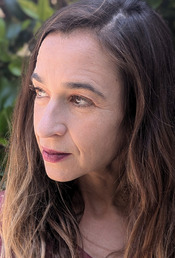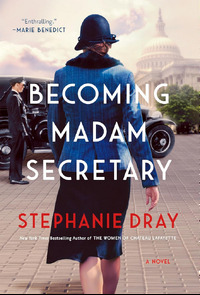“My mind isn’t going—so far as I can tell—but it’s changing.”
—Nicholas Carr, “Is Google Making Us Stupid?”
Nicholas Carr’s 2008 Atlantic article about the Internet’s effects on cognition, “Is Google Making Us Stupid?” might by now seem quaint; written prior to the era when infinite-scroll apps became a norm of daily existence, it covers how attention spans were affected by suddenly having all the world’s information at our fingertips via “the crazy quilt of Internet media” and the ability to jump between sites on “the Net” — blogs, news, information. Google.
And yet, while the article pre-dates the heyday of social media, it was certainly prescient. “As we come to rely on computers to mediate our understanding of the world,” Carr writes, “it is our own intelligence that flattens into artificial intelligence.” Seventeen years later, with chatbots, deepfakes, and AI scams and scandals, it arguably has.
Among the most nod-inducing of what Carr writes about is his own and others’ experiences of being voracious readers who could no longer pay attention to anything longer than a several-paragraph blog post. I couldn’t help but notice that while re-reading “Is Google Making Us Stupid” for the writing of this short essay—and during the process of composing it—I checked email (multiple times), Facebook Messenger, Instagram, and Surfline, a wave forecasting app.
However, even with more demands on attention, more distractions, and lots of peeks at social media, news, email, and entertainment websites while working, novels continue to be written, books are read, and we continue to, basically, function—so are these shortened attention spans problematic, or a neutral change along the course of our neural evolution?
I’ve been especially interested in how this new world affects writers and creatives whose work requires long stretches of deep focus; how is the creative process changing? Do we find it more challenging to write in this day and age than in the past? In my own fiction-writing endeavors, I’ve noticed that my brain likes to oscillate between hyperfocus and complete distraction. But it’s always been that way for me, since writing my first novel, published in 2008, the same as Carr’s article. My new one was written more recently, my brain on various social media channels, in the era of Chat-GPT, smartphones, and infinite scroll. The process, though, was the same: periods of binge-writing followed by fallow ones, and so forth, cyclically. Working this way feels natural, like the seasons.
In January 2021, I received an assignment from the publishing industry trade magazine Publishers Weekly covering “books for short attention spans,” published as “Brief Encounters: Pandemic-era publishers are packing big insights into bite-sized reads.” The books of every genre I covered in the round-up feature were short – the section that most stood out to me and inspired me was “fantastical novellas and collections of short fiction” that “offer readers a brief respite from reality.”
By then I had been carrying around the idea for my own fiction for a short attention span — a novel entitled The Distractions — for several years. At the outset, I had only this title. What were the distractions, I asked myself, or rather, who were they? I didn’t Google anything, just started writing with nothing but a title, symbol, idea, and a scene of a very drunken or otherwise altered woman throwing a garden statue through somebody’s window. Whose window? Who was this woman and why did she want to destroy these people’s property?
I began with only this and allowed curiosity to pull me through. The “Books for Short Attention Spans” assignment put me back into writing my novel at a time when I was close to giving up on it. I wasn’t giving up because I couldn’t focus or was too distracted by other things technological and otherwise, though. I was close to giving up because I had so many story problems. Story problems have been writers’ problems since the dawn of the written word.
It had nothing to do with my attention span or a growing lack of it. I decided to keep trying to solve the problems, or to keep letting the problems try and solve themselves. After finishing the article, I returned to the novel and ultimately did complete the umpteenth revision that eventually led to feeling done.
Ironically, THE DISTRACTIONS is not a book for short attention spans. It’s heavy on world-building, along with a bunch of invented language (it makes sense, I swear), and it clocks in at over 350 pages. It would not have qualified for the article that led me to finish writing it.
The upside is, I don’t actually think our attention spans are shortening, we are just using attention differently. As the world changes, we evolve and adapt. Do we need the same singularly focused attention span as, say, in a time when travel meant endless hours in a horse-and-buggy to get somewhere we’d now reach quickly by car? Perhaps we don’t need our attention spans as much anymore, or they are shortening and that’s okay.
Maybe doing our productive things in fits and starts is natural—even healthy—now. Or perhaps it’s not even new, which I think about when I am equally distracted by an urge for snacking or to go for a run as I am by the Internet’s allure.
Maybe readers will always be hooked by a great story and writers don’t need to modify their work, just learn how to do it well, with Orwellian brevity; the writer said, “Never use a long word where a short one will do,” and “If it is possible to cut a word out, always cut it out.” The Internet had nothing to do with that. It hadn’t been invented. So, when it comes to attention spans, are we lamenting the past when we should be looking toward the future? Could be a question from which to begin a novel.

Liza Monroy
Solitary tech worker Mischa Osborn is mourning the shelving of her passion project—an artificial intelligence algorithm capable of love—when a chance encounter with a social media celebrity leads her spiraling into an all-consuming obsession. Simultaneously, someone—or something—is watching.
Mischa Osborn spends her days as a ProWatcher—keeping distracted people on task and lonely ones accompanied—from her Brooklyn Megabuilding, while eating PetriMeat Steax and working out with her favorite personal trainer, a straight-talking algorithm named Tory.
Her carefully constructed, isolated existence is suddenly upended by a chance realspace encounter with a HighlightReel celebrity, Nicolás Adán Luchano. On their first date, hiking in Kuulsuits and watching DroneBeez pollinate flowers, Mischa experiences a brief but intense realspace connection.
Mischa takes to relentlessly watching Nic onReel. As Mischa’s ReelWatching spirals into an all-consuming obsession, and even realspace stalking, Mischa takes increasingly desperate measures to be seen and valued, sucking others into her vortex of obsession until she completely loses control.
Meanwhile, someone is equally obsessed with Mischa, tracking her every move and perhaps even influencing her choices.
A tale of how technology enables obsession, envy, and unrelenting comparison, told through an eccentric cast of interconnected characters, The Distractions invites us to reflect on who we are watching, and why.
Science Fiction [Regalo Press, On Sale: January 14, 2025, Hardcover / e-Book , ISBN: 9798888454817 / eISBN: 9798888454824]

Liza Monroy is the author of the novels The Distractions (Regalo) and Mexican High (Spiegel & Grau/Random House), the essay collection Seeing As Your Shoes Are Soon To Be On Fire (Counterpoint/Soft Skull), and the memoir The Marriage Act: The Risk I Took To Keep My Best Friend In America And What It Taught Us About Love (Counterpoint/Soft Skull). Her articles and essays have appeared in numerous publications, including The New York Times, O: The Oprah Magazine, The New York Times Magazine, the L.A. Times, Newsweek, Poets & Writers, Marie Claire, Everyday With Rachael Ray, Jane, Self, Bust and various anthologies, including both New York Times' Best of Modern Love, Best American Food Writing, Goodbye To All That: Writers on Loving and Leaving New York, One Big Happy Family, and Wedding Cake For Breakfast. She lives in Santa Cruz, California, teaches through Stanford Continuing Studies Creative Writing Program, and in her free time enjoys surfing, reading, yoga, sunshine, and coffee.
No comments posted.


 © 2003-2025 off-the-edge.net
all rights reserved Privacy Policy
© 2003-2025 off-the-edge.net
all rights reserved Privacy Policy